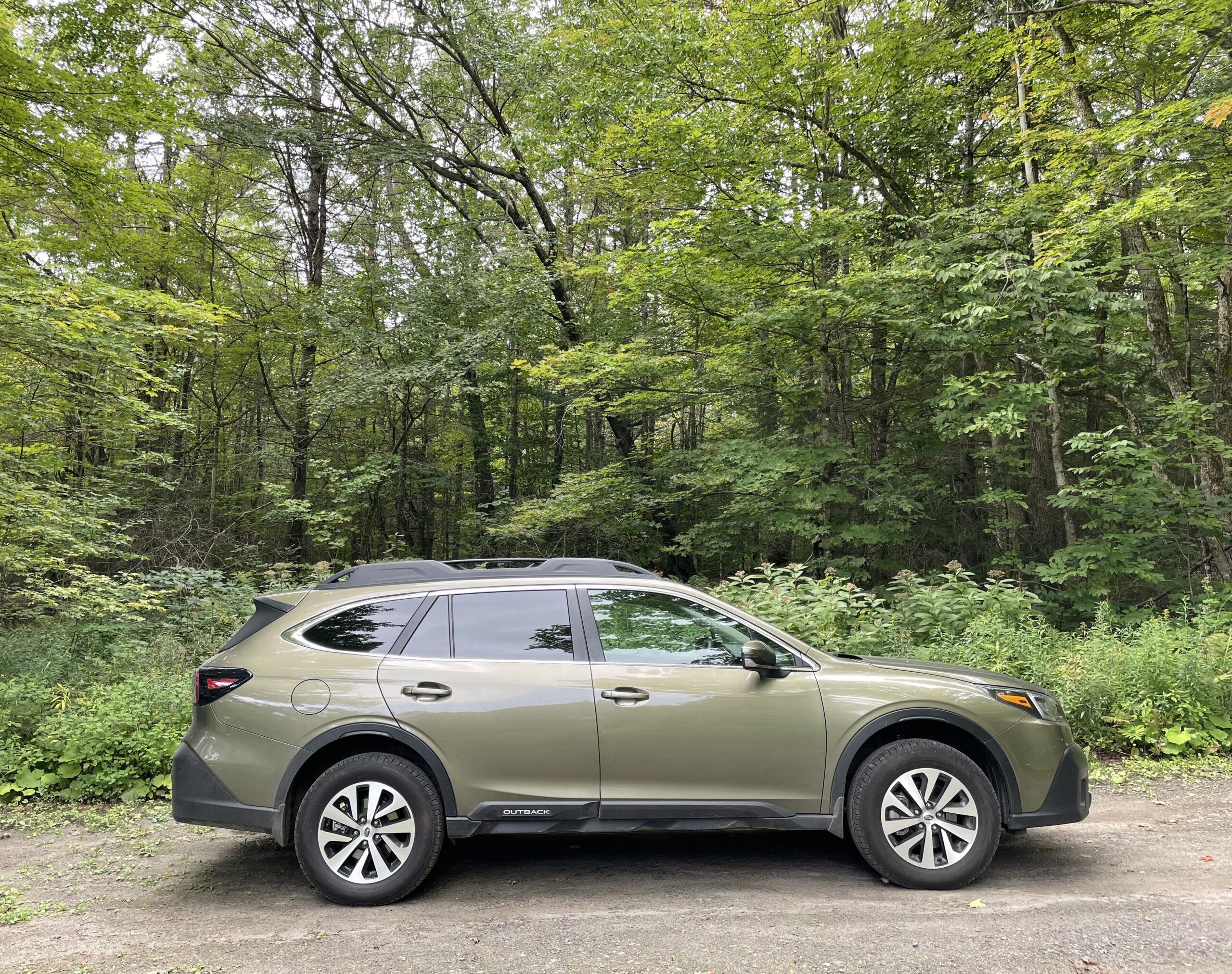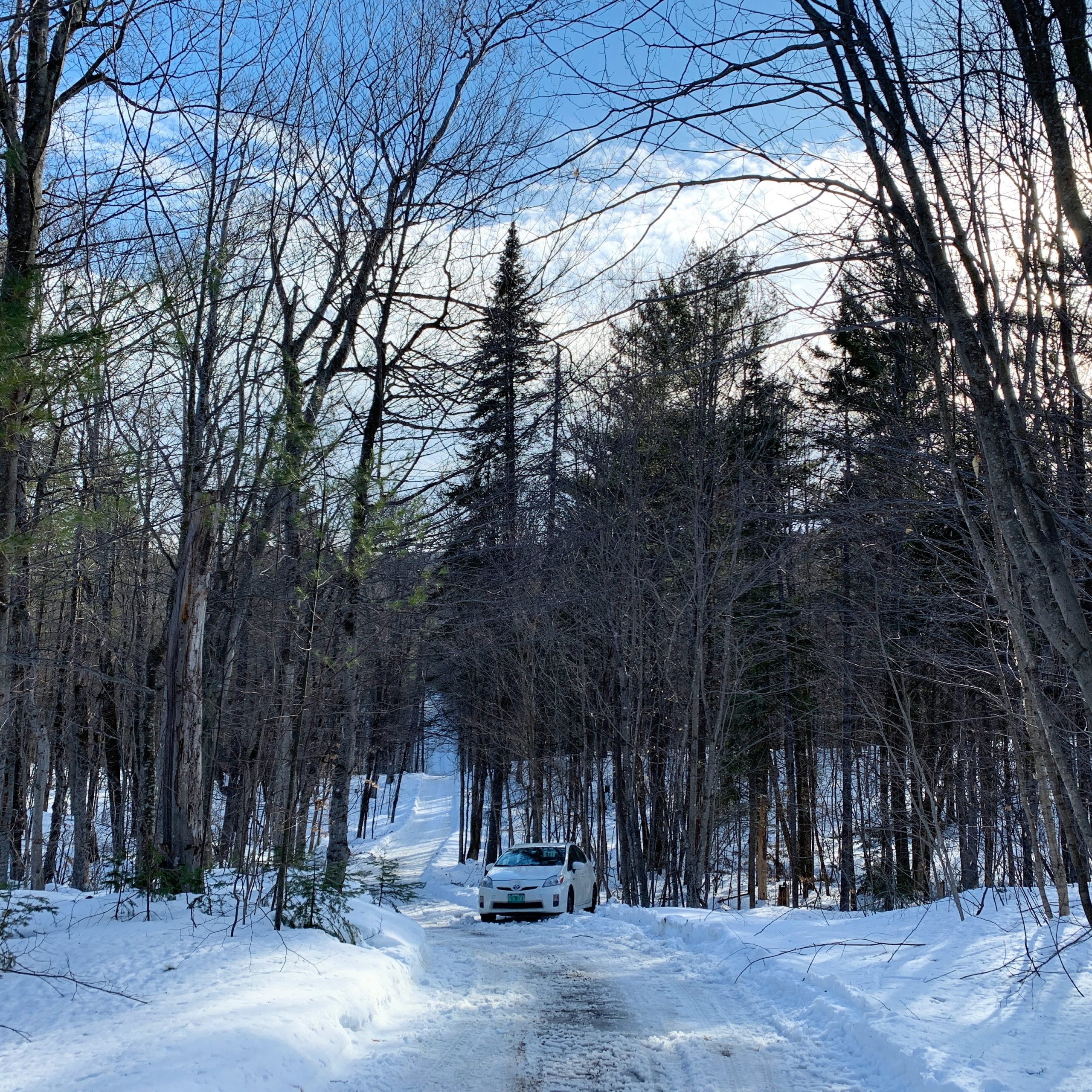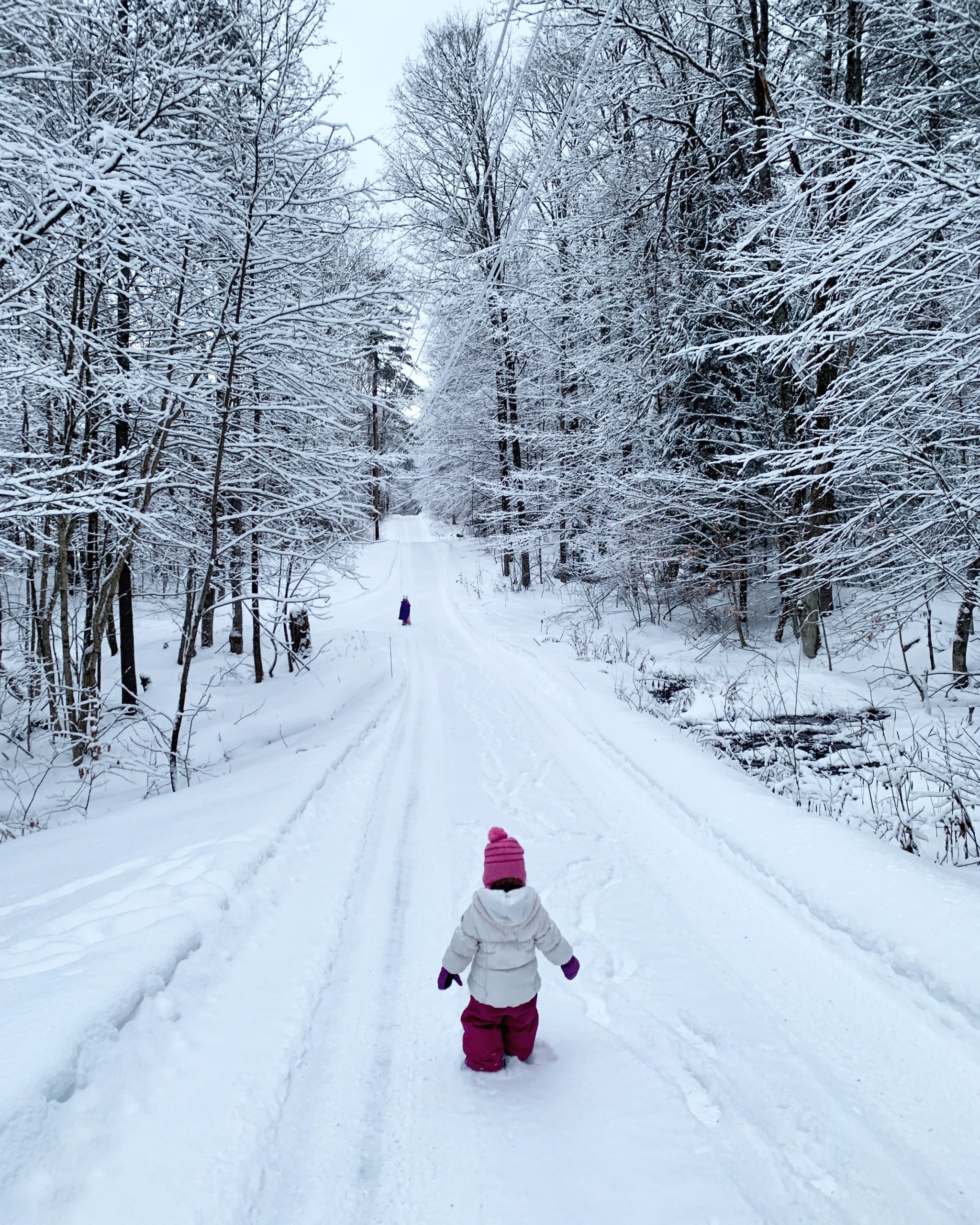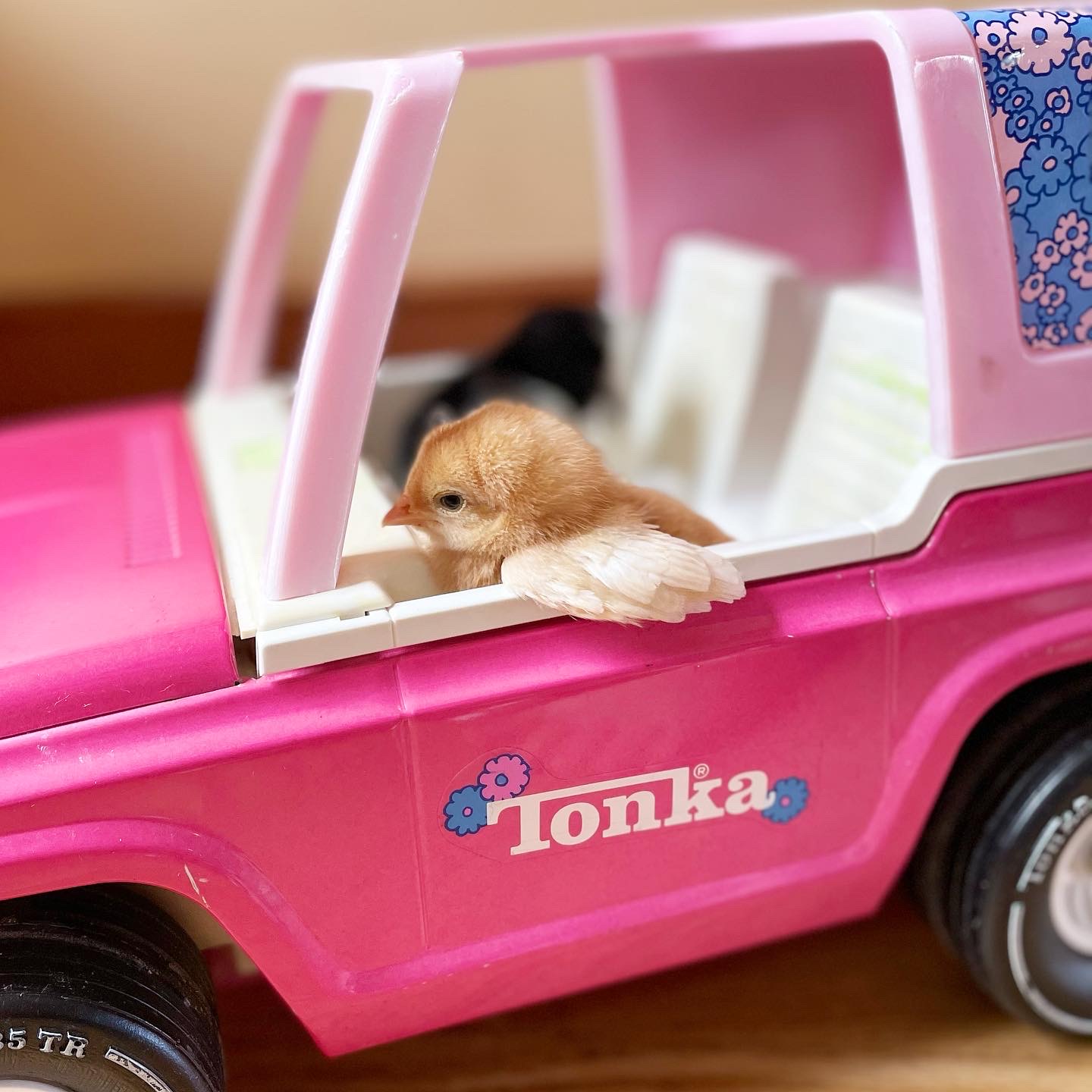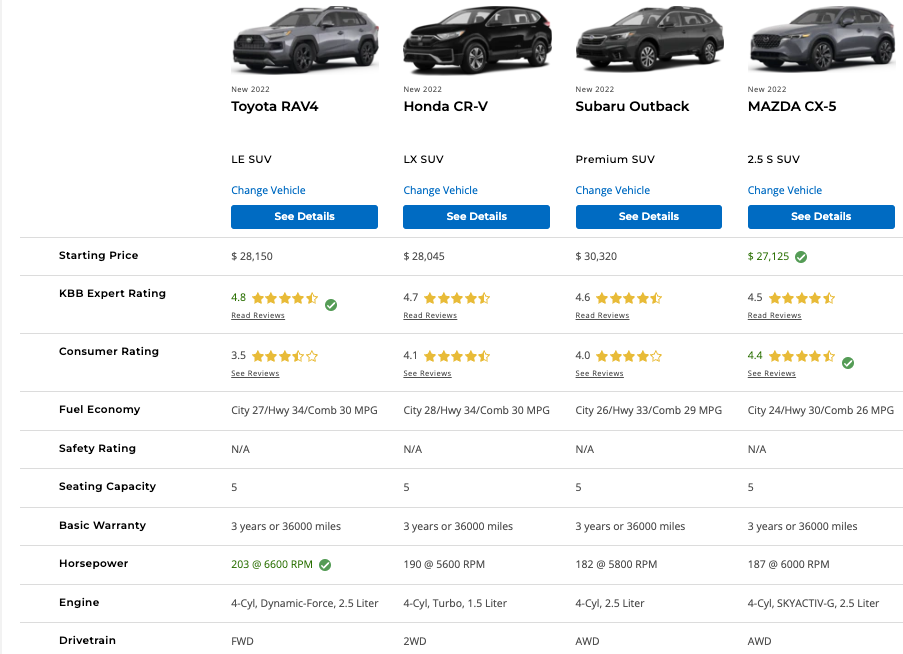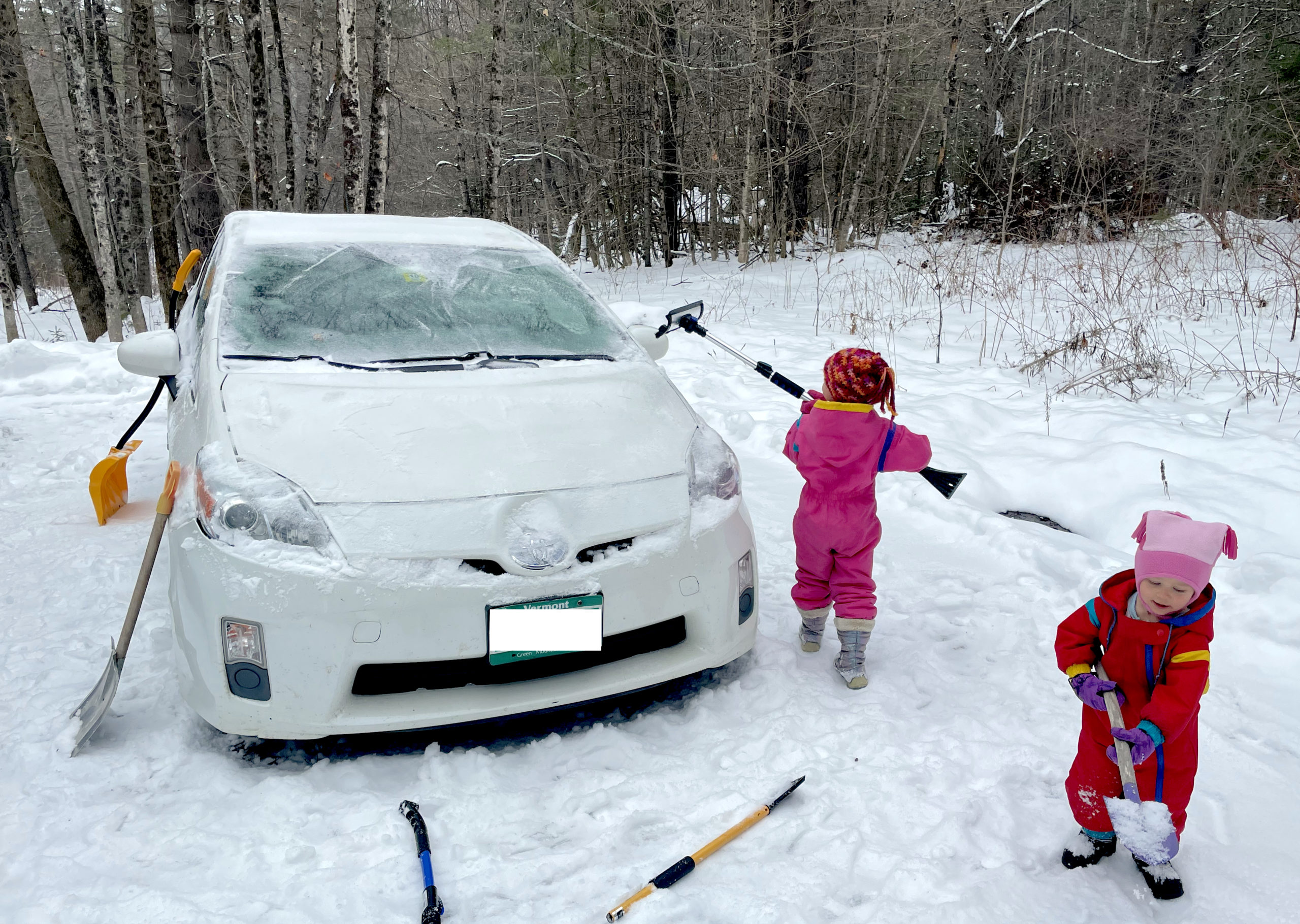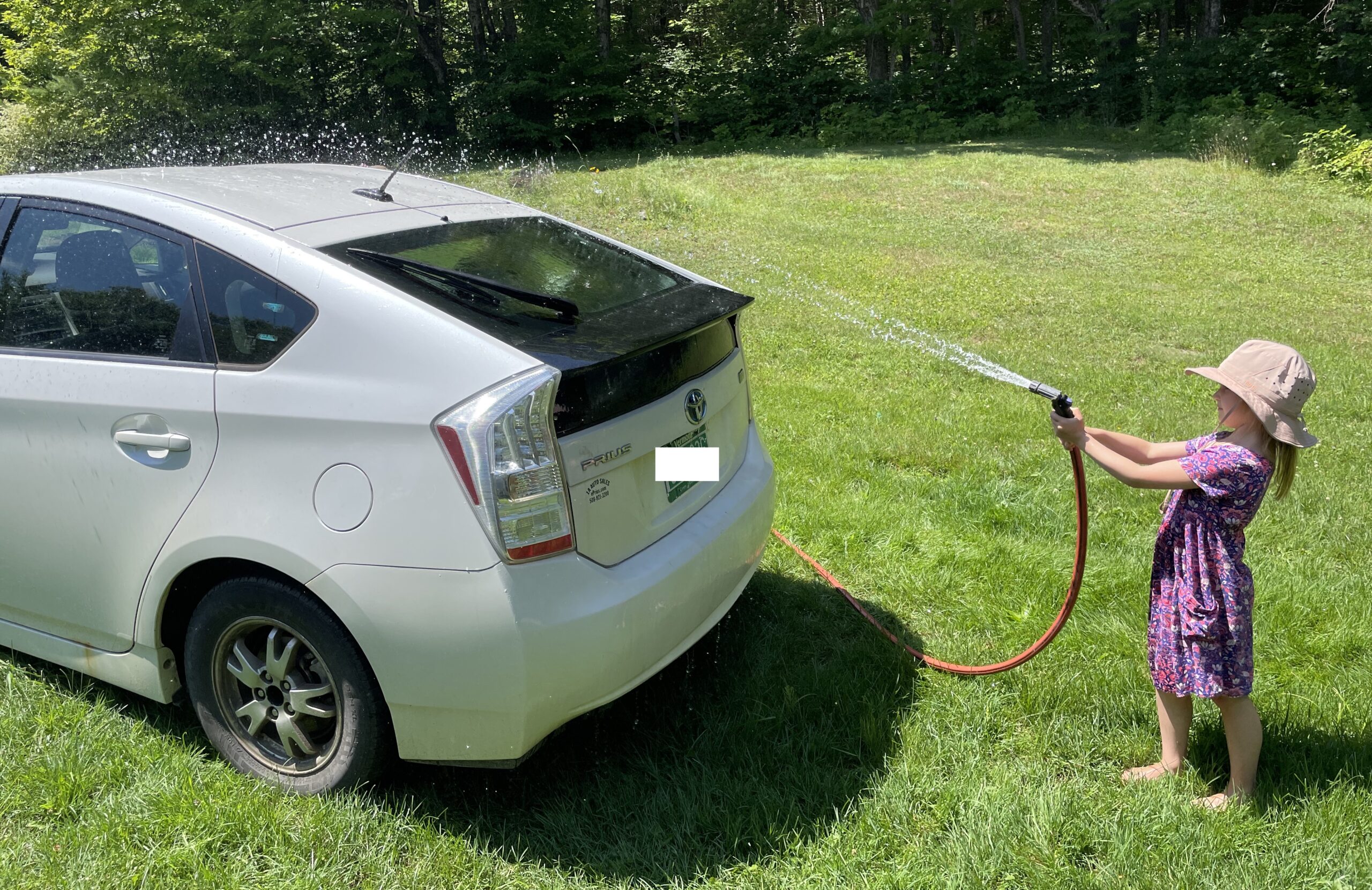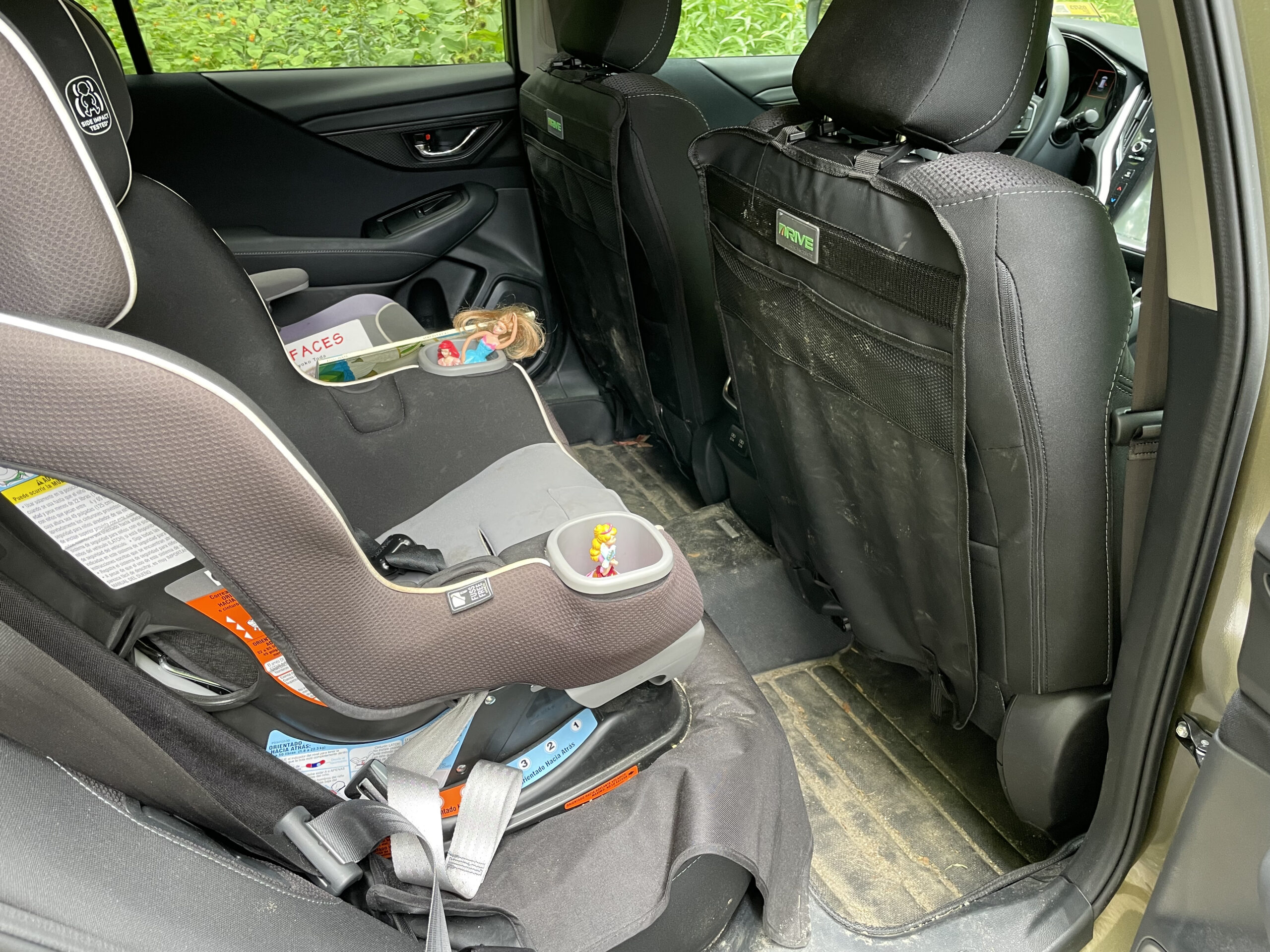We bought a new car. Not a “new to us” car, not a “nearly new” car, an actual factual brand new 2022 Subaru Outback. But Liz–you’re now fretting– don’t you know that:
Buying a brand new car has to be one of the worst financial decisions a person can make.
Buying a new car is like shooting yourself in the foot not once, not twice, but three times. Here’s why:
- The mark-up on new cars is astronomical.
- The opportunity cost of buying a new car–even if you pay cash–is profound.
- Most car loans have interest rates, which means you’re spending even more money.
Unlike a home–which sometimes, hopefully increases in value–a car is almost guaranteed to decrease in value. A car is not an appreciating asset.
Who wrote that?! ME. I wrote all of that back in the halcyon pre-pandemic years of 2014-2019. Back in the times before our current period of inflation and bananas car prices. So why ON THIS EARTH would I buy a new car?
Inflation of the Car Varietal
As you may have noticed, we have some inflationary action happening these days. And as I noted in this article, inflation does not impact all prices equally. Lucky for me, some of the most egregiously inflationary items are cars. How awesome for me!!!!
According to this Fortune Magazine article from June 2022:
Used car and truck prices have risen 16% over the past year, and 50% more than before the pandemic.
My research on the ground corroborated this as my husband and I found used cars that cost as much or almost as much as new cars. In some cases, we found used cars priced HIGHER than new cars for the simple reason of availability. If you need a car immediately, you might have to overpay for a used car because you can’t get your hands on a new car fast enough (although there are exceptions. See my notes on the Mazda CX5 below).
In normal economic times–or rather, in past economic times–used cars were remarkably cheaper than new cars, which made the depreciation on new cars astronomical. In other words, new cars would lose a tremendous amount of their value as soon as they were no longer new. Used cars, on the other hand, had a much more gradual depreciation curve, which meant you could buy a used car for a reasonable price and then, if needed, re-sell that used car at a reasonable loss. Currently, thanks to supply chain issues, a shortage of computer chips and inflation, used cars are no longer a deal.
We were faced with the reality of buying a several-years-old car for only around $2,000 less than a new car. In light of that, we saw no point in buying used. When you’re looking at a ~$30k purchase, we felt that a savings of $2k isn’t enough to justify buying a car with mileage and without a warranty.
Why Didn’t You Just Wait To Buy a Car?
We did. We’ve needed to replace our 2010 Toyota Prius since the start of the pandemic. But… we waited. We began searching for cars in earnest during the spring of 2021 and were flabbergasted by the prices. At that point, used car prices were up 42%!!! So, we decided to wait a year. We were optimistic that used car prices would normalize and we’d be able to follow our previous roadmap of buying a several-years-old car for a great price. HAH. Little did we know, inflation was just getting started.
Why Didn’t You Wait Another Year?
We considered this. Strongly. But, we lack the ability to predict the future and were concerned car prices might be even higher next year. Plus, we didn’t want to go through another winter with the Prius.
Why Did You Need To Replace the Prius?
Our 2010 Toyota Prius was a champ. She did her very best to survive Vermont’s winters and she made it (kinda) through six of them without (completely) falling apart. The Prius was ideal from a gas mileage perspective but abysmal from the perspectives of:
- Driving on rutted dirt roads
- Driving during spring mud season
- Driving on ice
- Driving through snowstorms
- Getting out of our driveway
- Driving on not-very-well-maintained rural roads
The Prius is made for city and interstate driving. The Prius is not made for rural backroads. I am honestly impressed we lasted as long as we did. When we lived in the city, the Prius was an ideal car. Here in the woods? The Prius was becoming a joke of a car.
Her major shortcomings were:
- Lack of all-wheel drive
- Lack of ground clearance
- Lack of modern safety features
Ground clearance is not something I considered before living rurally. But after getting every single stick, rock and piece of bark imaginable stuck to the underside of the Prius, ground clearance is something I think about often. Additionally, we frequently need to drive through several inches of snow because when there’s a big snow, the state snow plows can’t constantly remove all the snow from the road. Hence, having ground clearance and all-wheel drive are imperative (if, you know, you want to go anywhere).
Our Driveway: An Ongoing Saga
Then there’s our driveway. Longtime readers know alllllll about our bobsled course of a driveway. At a very hilly quarter-mile long, our driveway was the one major downside we accepted when we bought our house.
Thankfully, Mr. Frugalwoods maintains it himself with our tractor, which is a year-round job: snow removal all winter, grading in the spring, culvert reconstruction in the summer, some more grading in the fall… Despite his ministrations, there are quite a few winter days where the Prius cannot get out of the driveway.
I know this because I have many fond memories of loading both children into the Prius only to discover that it would:
a) not go up the little slope from the parking area onto the driveway
b) go up a portion of the driveway and then roll backwards
Fun times! If it rolled backwards, I’d then have to reverse down the driveway, park it, unload both children and re-load them into our truck (a 2010 Toyota Tundra). Exciting as this ritual was, I’m over it.
And yes, the Prius was outfitted with top-of-the-line Nokian Hakkapeliitta studded snow tires. Those helped a bit, but couldn’t make up for her lack of AWD and 4 centimeters of ground clearance.
Why Don’t You Just Drive the Truck all Winter?
This is what we did the past several winters. The Prius would make debuts on less icy/snowy days, but the truck became our daily driver. This was sub-optimal and not our intended use case for the truck, because:
- The truck gets HORRENDOUS gas mileage.
- I’m talking 12 MPG. Driving the truck daily defeated the entire existence of the Prius.
- The whole point of having a Prius was to capitalize on the Prius’s hybrid capabilities of 46 MPG. In addition to costing us $1M in gas, driving the truck all the time is terrible for the environment.
- The truck is intended for rare usage for hauling farm equipment/building supplies.
- The truck is for hauling the snow plow we bought a few years ago.
- The truck is for hauling our maple syrup-making equipment.
- The truck is for hauling the lumber we used to build the chicken coop and the woodshed.
- Our goal is to keep the truck for many, many years as a beater farm truck.
- Driving it often added mileage and wear/tear, which negated this purpose.
Why Do You Need Two Cars?
This is a fair question because I work from home and Mr. FW is early retired, so we very rarely both need to drive opposite directions at the same time. Thus, having two cars isn’t to solve the problem of a dual commute, it’s to meet our needs as subpar homesteaders and to ensure safety.
Since there’s zero public transportation out here, it’s a mandatory safety consideration to have two vehicles. We can’t have one parent at home with the kids without a vehicle–if there’s an emergency, they’d have no way to leave. I actually had this happen to me a few years ago (due to Mr. FW being out of town with the Prius and the truck breaking down) and it was an awful, terrifying feeling. I will pay whatever I must in order to have safe, reliable transportation.
What We Need In A Daily Driver
After capitulating to the Prius’s ineptitude in our environment, we began a two-year-long research project into our next car. Our priorities were:
- All-wheel drive
- Reasonable ground clearance
- Reliability
- Affordability (not buying a Tesla over here, people)
- Modern safety features
- Enough room for two adults and two children
- The best possible gas mileage for a non-electric, non-hybrid vehicle
- Ability to haul things like skis, paddle boards, kayaks, etc on the roof
We would LOVE to get an electric car and it’s our five/ten-year goal to sell this car and buy electric. We didn’t get electric this time because the prices on electric vehicles are super high and the technology is super new. I don’t want to get the first generation of any new technology–I want to see how it plays out and then select a car with a proven record of reliability. Since electric vehicles use an entirely different technology than gas cars, I don’t feel confident falling back on my previous knowledge of car brands. It’s all different now! At any rate, our hope is that our next vehicle will be electric.
The Cars We Considered Buying
- Toyota Rav4
- Honda CRV
- Mazda CX5
- Subaru Forester
- Subaru Outback
These are all classified as “small” SUVs. We didn’t want anything larger–such as the Toyota 4Runner, Toyota Highlander, Toyota Sequoia, Honda Pilot, Honda Passport, etc–because those cost more and get worse gas mileage. All of the vehicles on our list cost roughly the same and offer roughly the same gas mileage.
I made this comparison chart on Kelly Blue Book and, as you can see, these cars are nearly identical in every metric:
We test drove all of them and here’s what we found:
Toyota Rav4
This is the car we assumed we’d get because we love Toyota’s reliability record. Most of the cars we’ve owned have been Toyotas and we planned to continue that trend. Until, that is, we sat in a 2022 Rav4. Lo and behold when Toyota redesigned the interior, they did not take tall people into consideration. My husband is 6’2″ and I’m 5’7″. His head TOUCHED the top of the car and mine came very close. This was an immediate deal breaker. Can’t have a car we’re too tall for!
Honda CRV
This was a fine car to drive, but we weren’t as impressed with the trunk space. We often need to fit two kids’ bikes + other sundries and this trunk seemed tight. More importantly, the CRV’s total package isn’t as good: the AWD isn’t the best, nor is the ground clearance, and recent-year CRVs have had an oil dilution problem. Due to these factors, we discounted the CRV pretty quickly.
Mazda CX5
We loved this one. This was hands-down our favorite car to drive. It’s gorgeous, well-designed, smooth as butter to drive and has a very luxurious feel. I’m still a tad sad we didn’t get a CX5. But, our reasons were sound: its AWD capabilities aren’t top-of-the-line, the trunk space is smaller and, crucially, it isn’t as high off the ground as the car we chose. I would love to own a Mazda someday–they’re just so fun to drive! But, not the right car for us right now.
Subaru Forester
When we turned our research to Subarus, we intended to get a Forester. But when we went to the dealership, the salesperson told us that Foresters were way, way, way backordered and that it might be 6 months before we could get one. He then explained that the Outback has the same ground clearance and the exact same AWD system as the Forester, a BIGGER trunk and would be available sooner.
Subaru Outback
Longtime readers will recall that we owned a 2010 Subaru Outback when we moved to Vermont in 2016. It was, in fact, the car we bought for our new Vermont lifestyle! However, we were trying to use it as our truck. We bought the Prius and the Outback in the hopes that we could get away with using the Outback as our hauling vehicle and the Prius as our daily driver. We quickly realized that an Outback is not, in fact, a truck and you cannot, in fact, haul things like snow plows and full-size lumber. But we tried, let me tell you. Here’s the full story on our original Outback: Why We Broke Down and Bought a Used Truck.
As soon as we test drove the 2022 Outback, we remembered why we bought one in the first place. It ticked every single one of our boxes:
- Best AWD of the vehicles we considered (identical to the Forester)
- Highest ground clearance of the vehicles we considered (identical to the Forester)
- Best trunk space because it’s a station wagon as opposed to an SUV:
- I LOVE THIS TRUNK and we fill it to the brim on the regular.
- Good gas mileage:
- It hurt to say goodbye to the Prius’s phenomenal gas mileage, but we weren’t able to reap the benefits of that gas mileage during the winter anyway, so we should come out ahead on our annual average MPG.
- We’re averaging 30 MPG with the Outback, which is far better than the truck’s embarrassing 12 MPG!
-
Good reliability:
- We aren’t 100% jazzed with Subaru’s longterm maintenance record, BUT, buying a new car means it’s under warranty for 3 years/36,000 miles for basic and 5 years/60,000 miles for the powertrain, at which point we might sell it and get an electric vehicle anyway.
- Excellent modern safety features.
- Good affordability and within a couple thousand dollars of all the other cars we considered.
- A roof rack came standard:
- This is perfect for holding our ski roof box (details below) and my paddle board.
- This car was made for people who like outdoorsy, rural stuff, which makes life easy on us. Constantly trying to retrofit the Prius into something it’s not designed to do was a pain.
Plus, the waiting time for an Outback was shorter than all the other vehicles, except for the Mazda CX5. We could’ve driven a CX5 off the lot the day we looked at it, so if you need a car ASAP, check out Mazda!
This short waiting period was crucial for us because we needed to have the car before late October/early November (AKA the start of winter). And, we needed to have it with enough time to re-sell the Prius. Selling stuff during the winter (houses, cars, chickens) isn’t terribly common here. Most folks seem to prefer to transact when the weather’s decent. We put our name on a waiting list for an Outback in mid-April and had the car in hand by May 31st. Perfect for our timeline!
More on Safety Features
Another reason we wanted to upgrade to something newer than our 2010 was for the new safety features of the Outback, including: automatic braking, blind spot detection, more airbags, rear cross traffic alert plus modern crash test conditions. Newer cars have been re-engineered to meet higher crash test safety standards, which means they result in fewer deaths. The number of miles we drive means we’re much more likely to die in a car crash than from any other source, so having new safety features were a priority. When we added the Outback to our car insurance, our liability insurance actually went down–it’s cheaper to insure the Outback than the older Prius because we’re so much less likely to get into an accident with a newer car.
The Fate of the Prius
While used cars are bananas expensive to buy right now, that also means it’s a pretty sweet time to sell a used car. We listed the Prius for sale on Craigslist, our local town email listserve and Facebook Marketplace. We originally listed it at the price we paid for it back in 2015: $8,900.
We didn’t get any offers at $8,900 and so after two weeks, we lowered the price to $8,400. That was evidently the sweet spot because we immediately started to get offers. Interestingly, most of the queries came through Facebook Marketplace, which we’d never used before. In the past, we’ve bought and sold everything through Craigslist, but I guess Facebook Marketplace is more popular now. Many thanks to our friends A & C for recommending we use it–I honestly wouldn’t have even considered it.
A mechanic messaged me (through Facebook) that he wanted to buy it for his sister-in-law and came over the next day to take it for a test drive. He offered us $8,000, we countered at $8,200 and he agreed. A perfect negotiation where both parties felt like they got a good deal!
My Tips for Selling a Used Car:
- Do your research on pricing. Don’t just use the Kelly Blue Book price, look at what similar used cars are selling for in your area.
- List at the very top of the market with the knowledge that most buyers want to negotiate and you can always lower the price. You can’t exactly increase the price, so list high and then bargain down.
- Be extraordinarily transparent about the condition of the car. You don’t want to hoodwink anyone and it engenders trust when you’re transparent. It’s a used car, everyone knows it’s going to have some issues. We included the below rundown in our description of the Prius, along with photos of the body damage:
While a perfectly reliable daily driver, this car does have 163k miles and comes with the following known defects that we never felt were worth fixing:
- Faint gas smell outside the car when the tank is full to the top. It goes away after the first ~50 or so miles following a fill-up. We had our mechanic look into it and he couldn’t find any leaks and pronounced it safe. He recommended against dropping the tank unless it got worse. That was a year ago and it hasn’t gotten worse.
- Occasional rattles from all the heat shields and plastic fairings under the car. We have our mechanic chase these down whenever it is in the shop, but it still has a heat shield rattle at certain low rpms. You can’t hear it beyond idle.
- Very, very slow leak in the AC system. I have to charge it once every spring (easy to do with a $15 kit from Walmart) and it blows cold all summer. We had our mechanic do a fluorescent dye test, and he didn’t find anything (not surprising since it must be such a slow leak). We could throw parts at it, but we just charge it every spring. Been like that for at least 4 years.
- Minor body issues: small crack on lower left bumper, slight separation of bumper on upper right, minor surface rust and some paint chipping along the roof. See photos for details.
The person who bought it said he was specifically interested in buying from us because we were so forthright in outlining the car’s known defects. He appreciated that we disclosed all of this upfront and both he (and we) felt comfortable sharing this knowledge of the car’s shortcomings.
Do Not Do a Trade In With a Dealership
When we bought the Outback, I asked the dealership to let us know what they’d give us for the Prius if we traded it in. I already knew I wasn’t going to trade it in, but I wanted the data of their offer for this post. After assessing the Prius, the dealership offered us $3,000 and told us that was, “a great price for a car so old.” HAH. By going through the nominal hassle of washing it, vacuuming it, photographing it and listing it, we made $5,200 more by selling it ourselves. People, it’s worth the “hassle” to sell a car yourself.
The Prius Numbers
Here’s the breakdown on our 2010 Toyota Prius:
| Our Purchase Price | Date | Mileage at time of Purchase |
| $8,995 | April 2016 | 95,802 |
| Sold For | Date | Mileage at time of Sale |
| $8,200 | August 2022 | 163,456 |
That means the Prius only depreciated $133 per year (or 16.73%): Nice! Like I said, bad time to buy a used car, great time to sell a used car.
The Outback Numbers
What you’ve been waiting for! Here’s what we spent on our 2022 Subaru Outback Premium in Autumn Green:
| Item | Amount | Notes |
| Subaru Outback | $33,106.86 | Via check |
| Remaining balance on Subaru Outback | $2,500.00 | Via credit card |
| Ski roof box | $590.52 | Roof box for skis |
| Rims & snow tires
Floor mats |
$400
$198.90 |
Used from Craigslist. New rims are circa $600-$700 and don’t include tires |
| Kick mats | $26.49 | Kick mats (affiliate link) |
| Craigslist Advertising | $5.00 | To sell the Prius |
| TOTAL | $36,827.77 |
As you can see, we put $2,500 of the Outback purchase price on our cash-back credit card, which means we netted 2% cash back–also known as $50. The dealership said we could put a max of $2,500 on a credit card and so we did. We paid the remaining balance via personal check. We’ve never financed a car because we don’t want to lose money to interest. Since we knew we’d need to buy a new car, we began saving up cash for this purchase about two years ago.
You’ll also note that the ski roof rack was $100 cheaper than the list price. That’s because we bought it during an REI 20% off member sale and thus received a 20% discount. We were not the only REI members who thought to do this. The store was packed with gigantic delivery boxes of kayaks, roof racks, bicycles, etc. Clearly discount week is the right time to buy expensive outdoor equipment!
We also bought very nice, very expensive floor mats, which cover the entire floor (and sides) of the interior. We did so because we plan to one day sell this car and we want to keep it as clean as possible. And, since we live in the woods, we get about as much dirt in the car as outside the car. And gravel. Mud. Sticks. Leaves. And then of course there’s the snow, ice and salt… not to mention our two children. We were able to re-use this backseat cover we had in the Prius, but unfortunately, the kick mats didn’t fit (affiliate link). So, we bought these and they are ideal since both of our kids feel the need to prop their muddy boots on the seat back in front of them (affiliate link). And with that, the Outback is fully dirt-proofed!
Thanks to Craigslist we were able to find some used rims and snow tires, which are mandatory out here in the wintry sticks. The reason we get rims (in addition to tires) is so that Mr. FW can swap the tires himself every season, as opposed to paying our mechanic to do so.
Ok I can’t think of anything else to tell you. Hit me with your questions!
Have you had to buy/sell a car recently? What was your experience?
Never Miss A Story
Sign up to get new Frugalwoods stories in your email inbox.

